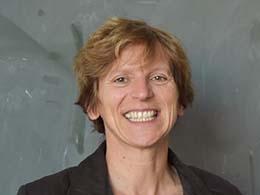Anne Gégout-Petit : "Together with my colleague Sophie Mézières, I am supervising a thesis (for the student Nassim Sahki in collaboration with the AP-HP (Paris public hospital system) on a project called EOLE-VAL, named after the clinical trial. It concerns patients having had a lung transplant and who, after 70 days of hospitalisation, return home. Would connected objects be a solution to their follow-up? This is the subject of the research and artificial intelligence is vital for us: a decision block in the middle of these objects is necessary so that they understand, among all of the signals recorded, those that are predictors of a risk for the health of the patient."
Are the data collected on transplanted patients?
A.G-P : "Yes, the idea is to observe a sufficient amount for three years, then analyse their characteristics and, finally, see if the problems could have been predicted. We may find it, we may not. Compared to us, the experts remain the doctors. They know, without a machine, that their patient's temperature is a sign of a complication, that a reduction in respiratory quality is an indicator. As for us, we work using the clinical protocol: the variables to record, the frequencies to choose, etc. We analyse these data in order to try and derive a prediction model from them: a block of digital intelligence that will assist their decision. These models, which work for healthcare, can also work for other sectors."
For example?
A.G-P : "For one company in the transport, security and aerospace sector, we had designed an algorithm for a box that recorded the parameters of an extremely sophisticated piece of equipment when it was turned on and off and, from there, we had derived a predictive model of the failure. So I proposed to the AP-HP doctors that we adapt it so that this tool could predict a dysfunction in the transplanted patient's state of health. Based on health data and other variables, of course."
Is this mathematical, statistical science truly indisputable?
A.G-P : "If the samples and data measurements are done properly and if the signals are good at the start, then AI performs well. However, nothing is ever perfect...Our role with regard to randomness is to measure "normal" variability and to see when the signals fall outside it. As a result, in our studies on genetics, it is not necessarily the expression of a gene that will predict the risk of illness, but that of several genes at the same time. We also look for this in the data: potentially complex patterns that predict something. There is some statistical learning in there, bioinformatics and mathematics. There is some digital intelligence!"
What is the power of AI?
A.G-P : "In this healthcare environment, the human aspect must never be forgotten. Frédéric Worms, member of the French National Consultative Ethics Committee, talks of the "human guarantee". For healthcare decision-making, the correct equation is a right combination of predictive algorithm and human expertise!"
Article by Laurence Verger, Research Communication Manager - CHRU Nancy
